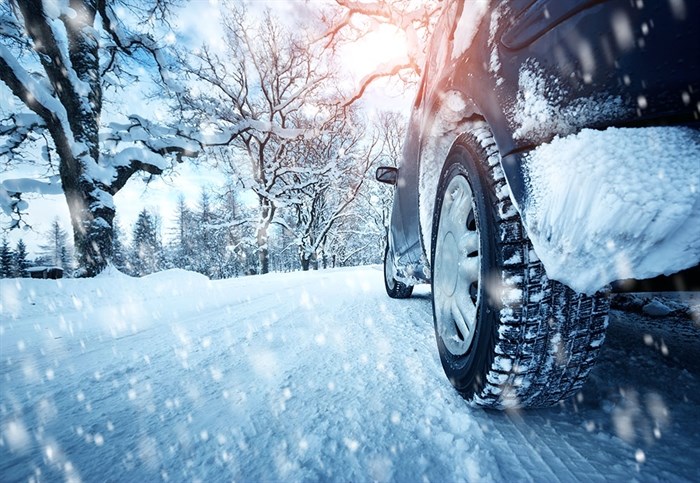
Choose this image or one of your own choice from https://stock.adobe.com
(ADOBE STOCK PHOTO / iNFOnews.ca)
January 01, 2020 - 12:00 AM
Check your battery. Do you have the right battery for Thompson-Okanagan winters? Batteries can take up to twice as much current in cold winter, so having enough cranking amps is vital. Check the posts and terminals for corrosion, being careful to avoid contact with your skin and eyes. You need a good connection to send a charge to your starter, and you can clean off corrosion with a simple battery terminal cleaner.
Change your wiper blades and refill your wiper fluid. Winter wipers come equipped with ice-repellent rubber. You will want good quality wipers that function properly through inclement weather and improve your visibility. You will probably use more wiper fluid keeping your windshield clear in the wintertime, but use wiper fluid that contains a de-icer to remove light ice and frost.
Put your snow tires on! Winter tires stay flexible when the temperature dips below zero, allowing them to grip the road through inclement weather. Look for the mountain and snowflake (M/S) symbols that mark winter tires recommended for driving from October 1 to March 31 in the Thompson-Okanagan region. Remember to use four matched tires for driving coordination when braking, accelerating and cornering. Even if you drive a 4WD or AWD, your tires are what contact the road and determine control.
Check your tire pressure. Cold air can make your tire pressure drop, so be sure to check and keep your tires properly inflated throughout the winter months. A tire that is improperly inflated is prone to traction loss, reduced tread life and irregular wear. The proper tire pressure for your vehicle is listed in your owner’s manual.
Check your rear window defroster. When winterizing your vehicle, check your rear window defroster before cold weather arrives to make sure it is working properly. You need to be able to see behind you to drive safely on the road in any season, but especially in the winter when braking may be significantly decreased.
Stock your car with emergency supplies. Your winter safety kit could include valuable items like; matches, flashlight and batteries, first aid kit, flares, ice scraper, non-perishable food and beverage items, warm clothing and extra blankets, jumper cables, a bag of sand and a shovel.
Replace the coolant and oil. It is important to have the correct antifreeze – water mixture to prevent freezing in your radiator. Changing the oil in your vehicle is part of your regular maintenance plan, and changing to a lighter motor oil may improve the viscosity (ability to flow). Refer to your owner’s manual or talk to your mechanic about the best choice in oil for your vehicle.
Or: Phone your mechanic or service repair centre and chat with them about bringing your vehicle in for maintenance to prepare for winter driving. No doubt, if your car is still on warranty, your advisor will be giving you a call to book your vehicle in for an appointment. Reading the appropriate information in your owner’s manual is always advisable, so you know what to expect before booking an appointment, or approaching a professional mechanic for information and help to get prepared.
Drive Safe!
Your Logo/Website Link Goes Here
News from © iNFOnews, 2020